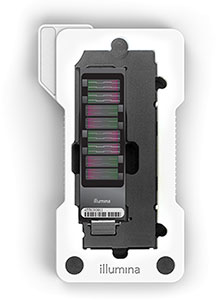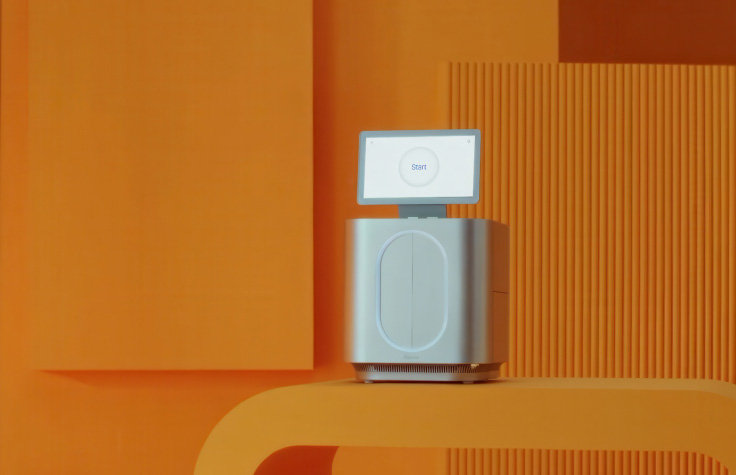Originally posted by Brian Bushnell
View Post
Seqanswers Leaderboard Ad
Collapse
Announcement
Collapse
No announcement yet.
X
-
The X series uses the standard 4-dye chemistry. NextSeq is the only one to use 2-dye. (And the one that people seem to be having the most problems with in terms of quality...)
-
The one difference with these machines is the throughput. A university facility needed 2 flow cells that could be run independently to help manage a queue, since a paired end run would be almost two weeks (less now). But if most runs are 1-3 days, then that is less of a problem. I suspect the 3000 won't be substantially cheaper so it won't be appealing since you might as well get twice the capacity for a little extra, but some of the other reasons are less important for these machines.Providing nextRAD genotyping and PacBio sequencing services. http://snpsaurus.com
Comment
-
I know nobody here cares about microarrays (nor should we?), but I think Illumina deserves some serious mad-scientist points for the NextSeq 550. If I'm understanding correctly, they've made a microarray adapter that fits in the flow-cell slot, and are reading it with the same scanner. More innovation than I'd expect from a company with a secure monopoly.

Maybe this is an attempt to wean the last few stragglers off arrays and get them into sequencing?
Comment
-
Can these new flow cells still be overloaded, or has Illumina created the ideal clustering procedure? Just load your library at high concentration for maximal occupance of the flow cell "wells" and skip qPCR and titration.....
Anything known about the clustering procedure yet?
Comment
-
Remembering back to the HiseqX announcement the little holes that now hold the clustering oligos (which is why this is a "patterned" flowcell) allow 1 oligo to overpower any others that try to cluster in there. I suppose you could somehow get it to overcluster but it wouldn't be the same kind of overclustering we are used to.
Clustering still appears to be on the cBot.
Here's some back-of-excel calcs I did on prices posted for the new 3k/4k reagents. Throughput assumptions are made based on average numbers given by Illumina in their specs and 8-lane FCs.
Comment
-
They still need to be quantified. Assuming similarity of HiSeq 4000 flow cell to HiSeq x, they can be overloaded which will reduce the reads %PF. Low loading will increase the number of duplicate reads. Illumina manual also states that underloading can reduce or result in unacceptable %PF. Loading is depend on library type (Nano or PCR-free).Originally posted by HeinKey View PostCan these new flow cells still be overloaded, or has Illumina created the ideal clustering procedure? Just load your library at high concentration for maximal occupance of the flow cell "wells" and skip qPCR and titration.....
Anything known about the clustering procedure yet?
Comment
-
Looks like there will be a V2 chemistry coming soon for NextSeq. Illumina claimed that the error rate can be on par with MiSeq/HiSeq. Hope this is true. This can be a nice upgrade for MiSeq.
HiSeq 4000 is quoted at $900K and 2500 is reduced to $690K. Both are more expensive than I expect.
Comment
-
I asked Illumina and was told not. Apparently the cameras are more sensitive.Originally posted by HeinKey View Post#SNPsaurus:
I assume it will be 2x 150 bp in 3.5 days.
2.1 to 2.5 billion clusters per flow cell, in a 2x150 bp run is 630 - 750 Gb.
With a speed >200Gb per day a 2x 150 bp run will take 3.5 days.
I wonder if we can upgrade the 2500 V4 machine to a 4000 version...
Also, the NextSeq550 capability for arrays is currently limited to the methylation and karyomapping chips, not sure why. They have suggested they may look into allowing iSelect if enough users are interested. Personally, I feel it would be a good move - core labs could use the NextSeq as a stopgap for priority NGS/genotyping runs if the HiSeqs/iScans are at capacity or down for repair.
Comment
-
just visited an Illumina meeting in Brussels.
Current HiSeqs are not upgradable to the 3000 or 4000 versions. Hardware is too different between the systems.
4000 and 3000 can only sequence Human DNA with certain fragment length. WGS, exome and RNAseq will work well, other library types are not supported due to the limitations of the new exclusion amplification kinetics.
New NextSeq V2 chemistry was presented. New dyes in the V2 kits with much less spectral overlap compared to the V1 dyes. Discrimination between dyes is much better resulting in higher quality reads and lower error rates. Now comparable with their four dye chemistry.
All in all very informative again.
Comment
-
No surprise there.Originally posted by HeinKey View PostCurrent HiSeqs are not upgradable to the 3000 or 4000 versions. Hardware is too different between the systems.
I highly doubt 4000/3000 are going to be limited to human samples only (DNA with certain fragment size perhaps because of ordered flowcells).Originally posted by HeinKey View Post4000 and 3000 can only sequence Human DNA with certain fragment length. WGS, exome and RNAseq will work well, other library types are not supported due to the limitations of the new exclusion amplification kinetics.
Comment
Latest Articles
Collapse
-
by seqadmin
The field of immunogenetics explores how genetic variations influence immune responses and susceptibility to disease. In a recent SEQanswers webinar, Oscar Rodriguez, Ph.D., Postdoctoral Researcher at the University of Louisville, and Ruben Martínez Barricarte, Ph.D., Assistant Professor of Medicine at Vanderbilt University, shared recent advancements in immunogenetics. This article discusses their research on genetic variation in antibody loci, antibody production processes,...-
Channel: Articles
11-06-2024, 07:24 PM -
-
by seqadmin
Next-generation sequencing (NGS) and quantitative polymerase chain reaction (qPCR) are essential techniques for investigating the genome, transcriptome, and epigenome. In many cases, choosing the appropriate technique is straightforward, but in others, it can be more challenging to determine the most effective option. A simple distinction is that smaller, more focused projects are typically better suited for qPCR, while larger, more complex datasets benefit from NGS. However,...-
Channel: Articles
10-18-2024, 07:11 AM -
ad_right_rmr
Collapse
News
Collapse
| Topics | Statistics | Last Post | ||
|---|---|---|---|---|
|
Started by seqadmin, Today, 11:09 AM
|
0 responses
24 views
0 likes
|
Last Post
by seqadmin
Today, 11:09 AM
|
||
|
Started by seqadmin, Today, 06:13 AM
|
0 responses
20 views
0 likes
|
Last Post
by seqadmin
Today, 06:13 AM
|
||
|
Started by seqadmin, 11-01-2024, 06:09 AM
|
0 responses
30 views
0 likes
|
Last Post
by seqadmin
11-01-2024, 06:09 AM
|
||
|
New Model Aims to Explain Polygenic Diseases by Connecting Genomic Mutations and Regulatory Networks
by seqadmin
Started by seqadmin, 10-30-2024, 05:31 AM
|
0 responses
21 views
0 likes
|
Last Post
by seqadmin
10-30-2024, 05:31 AM
|

Comment